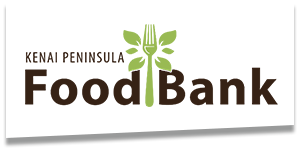The new federal program would have meant an extra $120 per child in direct funds this summer to families who qualify for free or reduced lunches — or about half of all kids in Alaska.
Officials with Gov. Mike Dunleavy’s administration cited a major food stamps backlog at the Alaska Division of Public Assistance as the reason for opting out of the program, which would have increased the workloads of staff who have been struggling for nearly a year to process benefits in a timely way.
Currently, there are around 8,000 Alaskans who’ve been waiting months to receive benefits through the federal Supplemental Nutrition Assistance Program, or SNAP.
“Eligibility technicians are working hard to clear up the backlog of SNAP applications and expect to have that completed by this Spring,” Caroline Hamp, a spokeswoman with the Alaska Department of Education and Early Development, said in a statement Wednesday. “Once the backlog of SNAP applications has been cleared, the departments will reconsider launching the (program).”
In late December, a DEED administrator told the Juneau Empire that it was the cost of the program — not the SNAP backlog — that was the reason the state was opting out of the new program.
Hamp did not immediately respond to questions about the cost of the program, and whether that was a factor in the state’s decision.
The summer food program is meant to offset the absence of the meals provided to children during the school year, and is set to provide $2.5 billion in grocery assistance to 21 million children nationwide beginning in June, according to a statement from the U.S. Department of Agriculture.
In Alaska, an estimated 58,000 children would have qualified for nearly $7 million in federal funds this summer, according to an analysis by the Food Research & Action Center, or FRAC, a national nonprofit that focuses on reducing poverty-related hunger.
Governors in other Republican-led states also opted out of the program, giving a range of reasons for the decision. In Iowa, Gov. Kim Reynolds said in a written statement the few restrictions on how the funds were spent would “do nothing to promote nutrition at a time when childhood obesity has become an epidemic,” and that existing programs would suffice to support the state’s families. Other states cited the administrative costs associated with the program and other hoops they needed to take to get it up and running.
Jeff Turner, a spokesperson for Dunleavy, did not comment on the governor’s stance on the program, deferring all questions to the Alaska Department of Education and Early Development, which would have been responsible for administering the program alongside the Division of Public Assistance.
In an emailed statement Thursday, a USDA spokesperson said the agency recognized that “standing up a new program in a very short time period is no easy task.”
“Potential challenges may include making systems changes, identifying sufficient staff, and securing financial resources to cover program administration, particularly their responsibility for covering 50% of the administrative costs associated with operating the program,” the USDA said in a statement.
Hamp noted that struggling Alaska families are still able to access free food for their kids during the summer months via an existing summer food program that is sponsored by local nonprofits, schools and agencies.
Cara Durr, CEO of the Food Bank of Alaska, said her organization was “bummed” the state won’t be participating in the federal program, calling it a “great resource for kids.” “I just hope that we as a state can get to a place with our systems where when something like this is available, we can participate and offer this to families,” Durr said. “Because right now, we’re still seeing really high levels of need.”
For more information, visit foodbankofalaska.org.
